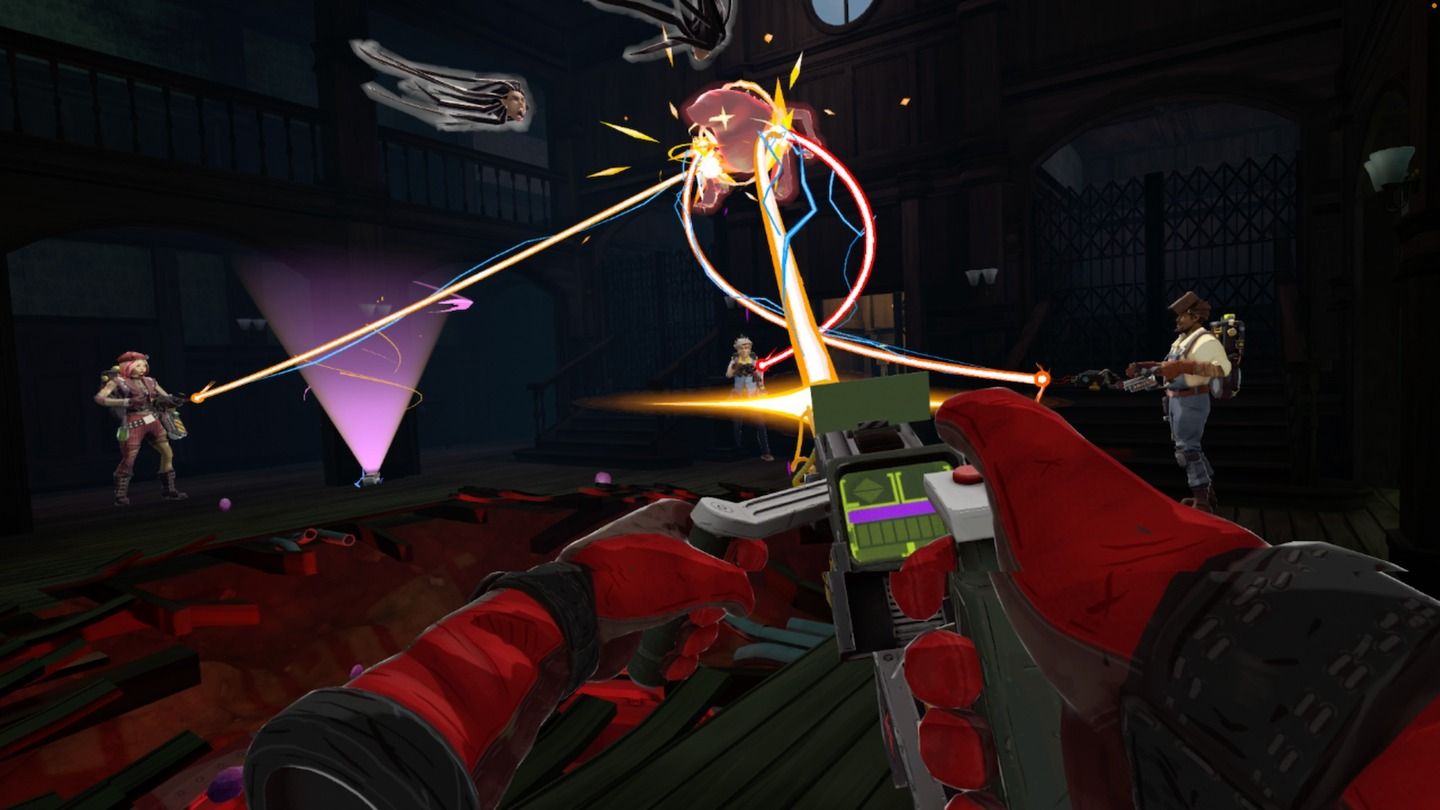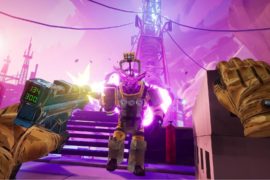Ghostbusters: Rise of the Ghost Lord releases today for PSVR 2 and Quest headsets. We’ve been playing the game this week – here’s what we think so far.
Note: This is an unscored review-in-progress. While we’ve been able to play ahead of launch, much of the game is designed around multiplayer. As such, we’re waiting to progress further along the campaign and try the online matchmaking experience before giving our final verdict. Keep an eye out for our full review with updated thoughts and a final scored verdict next week.
Heralding the start of a pre-holiday season game rush, Ghostbusters: Rise of the Ghost Lord has positioned itself as perhaps one of the biggest titles to release this year so far. It marks a potential sigh of relief for Quest 3 and PSVR 2 owners waiting for exciting new content, but also a rare partnership bringing together a huge multi-film intellectual property and one of VR’s most veteran development studios.
It’s a big bet from all angles, but does it pay-off?
Platforms: PSVR 2, Quest headset (Review-in-progress conducted on Quest 3)
Release Date: Out now
Developer: nDreams
Price: $34.99
Ghostbusters has always been about team efforts, so it makes sense that Rise of the Ghost Lord is designed around co-op multiplayer. While it is possible to play through the game solo, the experience will be worse off for it – this is 100% a game made to be played with others online or, even better, your friends.
The game supports play with up to four players and offers a few solutions to make teaming up as smooth as possible. Not only is the game launching same day on Quest and PSVR 2 headsets, but it also supports full cross-platform play from the get go, which is fantastic.
There are room codes if you want to party up with friends, as well as online matchmaking options if you’d prefer to let the system find players for you, with an built-in audio chat for communication between teammates.
The game’s lobby is the San Francisco Ghostbusters HQ, acting as a hub area for you to upgrade gear, change skins and begin missions alongside friends. You’ll also hear snippets of dialogue between missions and receive other updates that progress the narrative forward.
A Ghostbusting Gameplay Loop
Rise of the Ghost Lord begins with an intro sequence that runs through the basic controls and mechanics, while also setting up the game’s loose narrative premise featuring the titular Ghost Lord villain.
After that intro sequence is done, you’re placed into the hub lobby and left to your own devices. The order of missions is dynamic, with players able to choose from a selection of three at any given time. Missions last around 10 minutes (give or take) and are split across four types, each with different objectives – Harvester, Giga Trap Retrieval, On the Clock and Exorcism.
After completing a mission, you’re returned to the hub, where you can spend hard-earned cash on equipment upgrades and more.
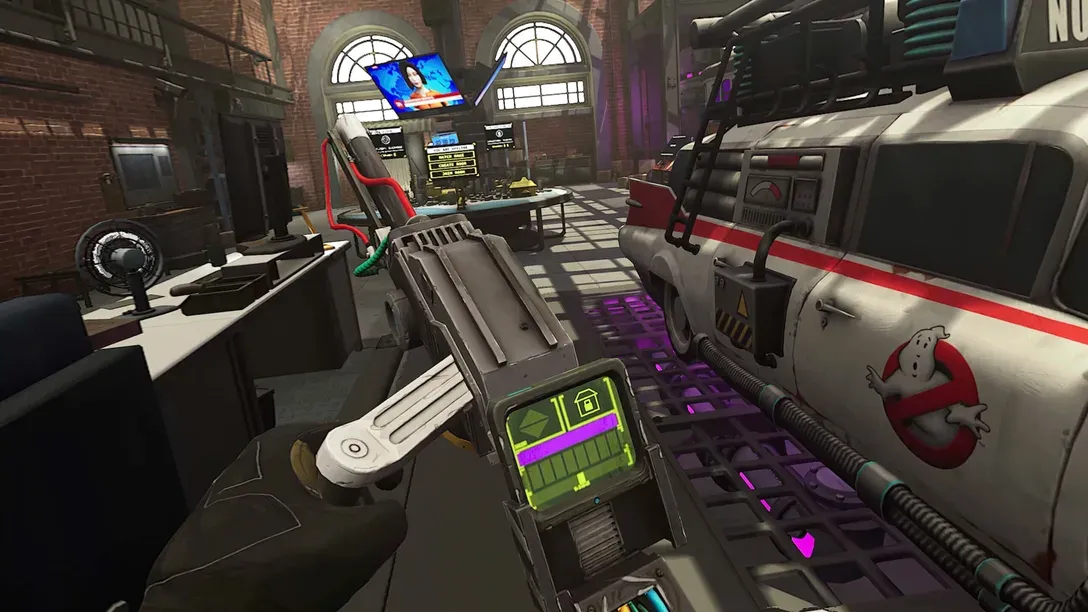
So far, I’ve had the most fun with Harvester missions, which involve locating a large ghost-catching machine on the map, finding parts to repair it and then trapping ghosts in it until your team has filled two canisters-worth of ghosts.
On the Clock is a straightforward timed objective mode, requiring you to catch as many ghosts as you can within 10 minutes, while Exorcism sees your team locating objects on the map that will help close a ghost-ridden portal. Giga Trap Retrieval involves the most teamwork, requiring you to locate a Giga Trap and carry it across the map for extraction while fighting against ghosts. If a team member drops the trap and nobody picks it up again quick enough, the mission will fail.
The maps are set across San Francisco, including iconic locations like Alcatraz and the Golden Gate Bridge. While not the most detailed environments ever, some nonetheless feature impressive scales, especially for a standalone headset like Quest. The maps do repeat themselves, but with variation in accessible areas and mission types. They’re designed in a way that allows areas to be blocked off or restricted, routing players one way on a given mission and another on the next. As an example, the Golden Gate Bridge map has two sides and areas at different elevations. I played one mission where I moved between both sides of the map but stayed on the ground, then another where I was restricted to one side but also explored an elevated section looking down on the bridge from above.
It’s an understandable solution that lets nDreams get more out of the maps it’s created, but we’ll need to play more to determine whether there’s a good balance between total maps, how often they repeat and the variety on offer.
Ghost Hunters & Collectors
So Rise of the Ghost Lord features a dynamic mission structure across a set of varied maps, but what about actually catching ghosts? Is the ghost busting actually any fun?
For the most part, yes – though there’s a few lingering questions over potential repetitiveness.
Players are equipped with some key tools for their ghost-hunting adventures – a PKE meter (used to track objectives and scan the environment), a launch-able trap (for catching ghosts, of course) and a proton wand (to shoot out streams that vaporize ghosts).
The first two are located on your hip, with the main proton wand located over your shoulder. The wand is best wielded with two hands, shooting out a bendy stream that can be aimed around the environment, tracking the movement of ghosts as they fly around you.
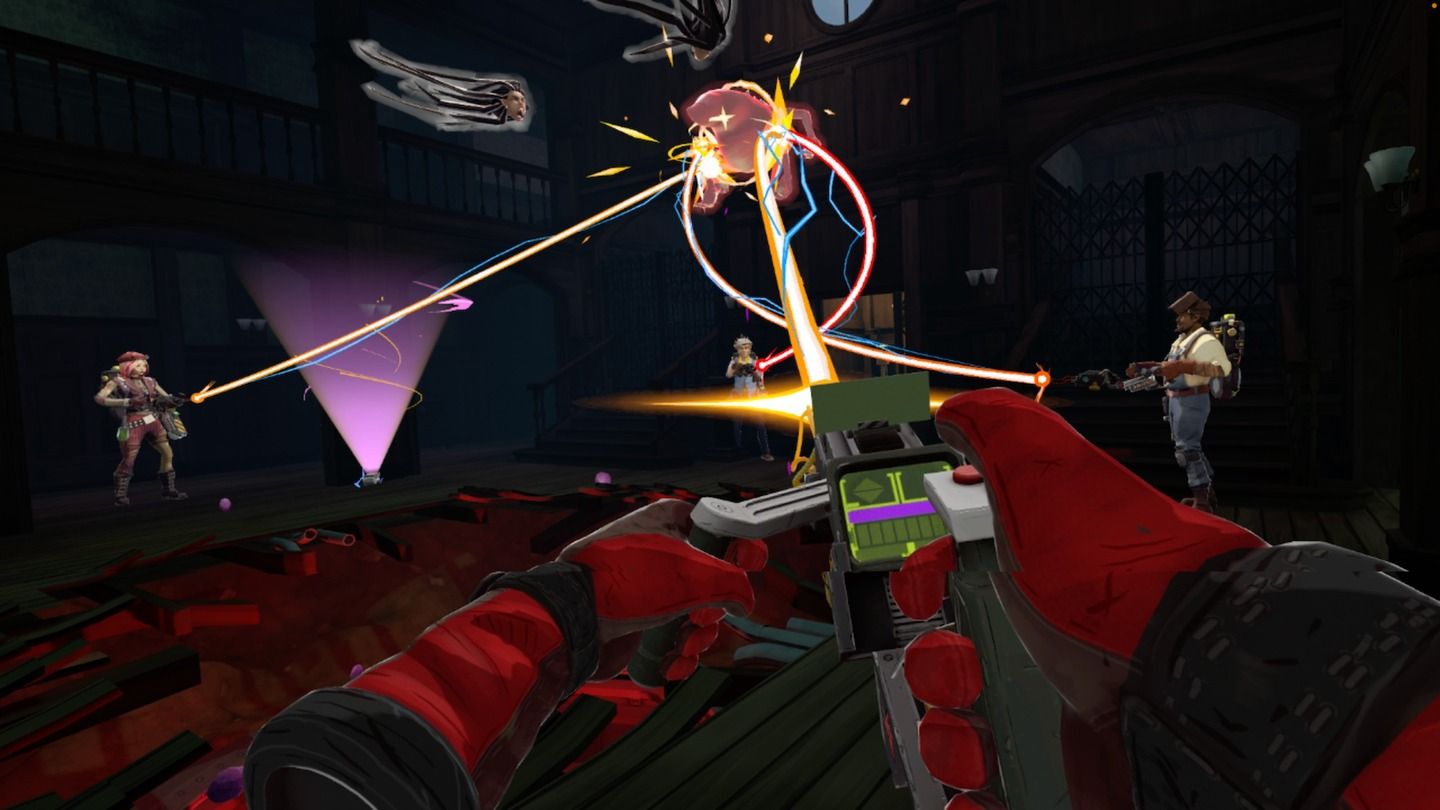
Smaller ghosts don’t require traps – you and your teammates can just shoot them with your proton wands to vaporize them. However, larger ghosts require a bit more teamwork and coordination, with two deplete-able bars floating on each side of them – shields on the right and health on the left.
Tracking them with your stream will wear down their shield. Once depleted, your stream will tether the ghost in a lasso. You’ll need to pull your proton wand in the opposite direction to the ghost’s movement to wear down its health. Doing this will also heat up your proton wand, requiring you to press the A button right at the peak to vent it. If not, your wand will overheat and temporarily shut down.
Once a ghost’s health has been depleted, you can pull it into a nearby trap or harvester. It’s an overall clever system that takes good advantage of motion controls to create an experience that feels right at home in VR. Being efficient also often requires communication between teammates to ensure you’re targeting the same ghost – multiple streams on the same target will make faster work of the ghosts.
The ghosts will also attack you through all of this, with each ghost variety featuring different attack patterns that you’ll need to evade appropriately. Things can get pretty spicy as more ghost types are introduced – if a team member is downed, they can be revived with a high five. Evasion is one of they key’s to success and though the game offers both smooth locomotion and teleport options for movement, it’s much easier to simultaneously fight and dodge attacks with the former.
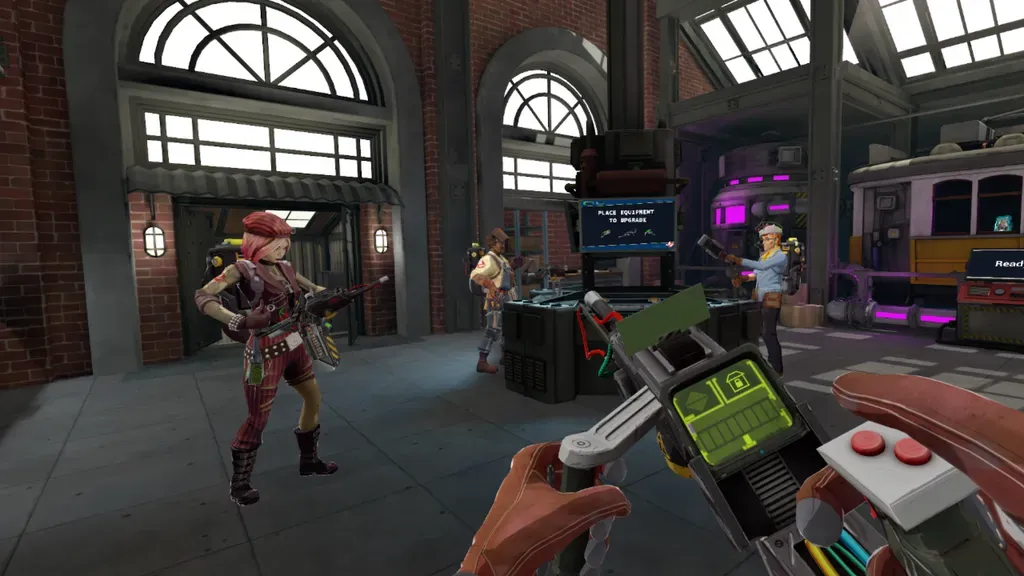
Questions of Variety
Even with an interesting set of ghost-hunting mechanics and decent variety in enemy types, maps and objectives, our biggest question at the moment is how long that will all remain engaging for.
So far, we’ve played a few missions in co-operative mode and some more in offline solo mode (for which you’re joined by an AI-controlled ghost ally fighting alongside you). With our limited pre-release experience, we can’t speak to how the overarching narrative/campaign plays out nor how many total missions it comprises of. That said, even with our limited experience, it feels as though Rise of the Ghost Lord’s gameplay could devolve into feeling a bit same-y across the campaign.
We’ll have to play more to confirm whether that’s truly the case – perhaps there’s some gameplay twists in store down the line. No doubt a lot of fun is also meant to also come from the social aspect of the game, which we will be testing a lot more of now that the game is properly live.
Mini-Puft Mayhem Mixed Reality Mode
On Quest, Rise of the Ghost Lord also includes a mixed reality mini game that breaks open your ceiling to reveal a giant Stay Puft Marshmallow Man.
You’ll use a cannon-slingshot device (with fairly wonky controls) to suck up floating mini-pufts and bombs that can be shot at the giant Marshmallow Man above you. One round won’t take you more than five minutes to complete.
I’d say you’re likely to play through Mini-Puft Mayhem once and then never again, but that might encourage you to give it a try – I’m not sure it’s even worth that. It amounts to a fairly uninspired mixed reality experience that will look great in a Quest 3 commercial but offers little of substance to players.
Ghostbusters: Rise of the Ghost Lord – Review-In-Progress
Sony Pictures VR and nDreams have built a solid foundation for a decent co-op multiplayer experience with Ghostbusters: Rise of the Ghost Lord. We’ve found good mechanics and an overall engaging presentation in what we’ve played so far, but we’ll need to play more to report properly on the online multiplayer experience and performance across different headsets.
The biggest lingering question is whether there’s enough variety to sustain players coming back for multiple sessions across the main campaign, let alone beyond that.
Keep an eye out for our updated review in the days to come with more info and our final verdict.
